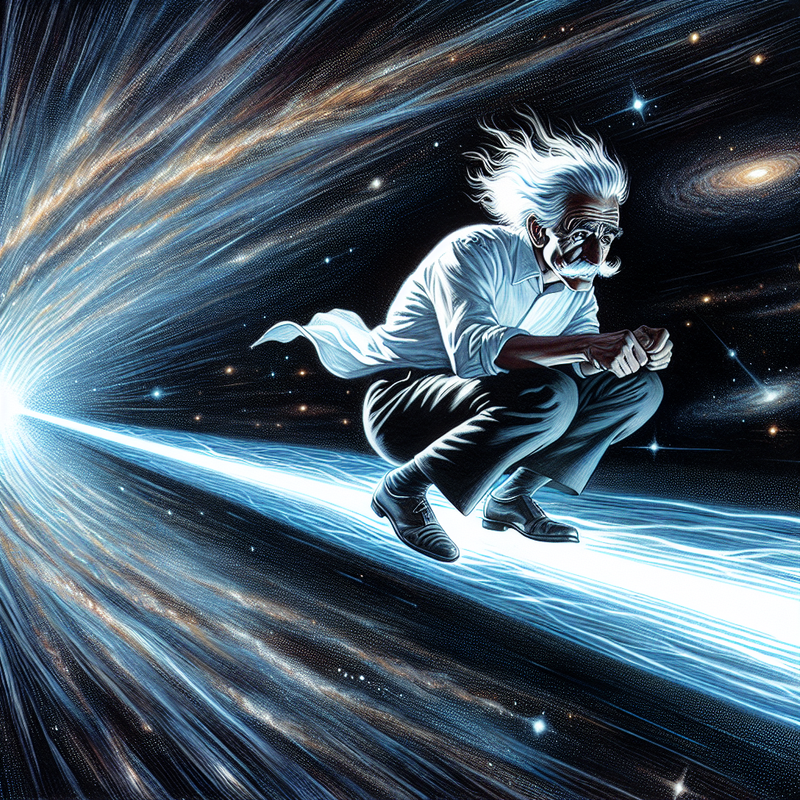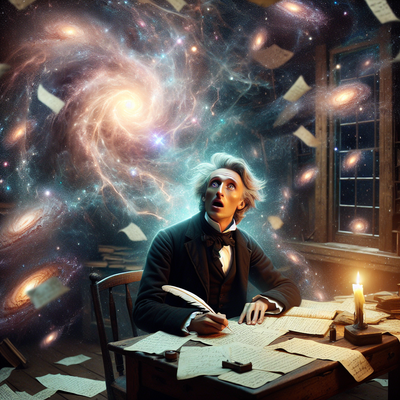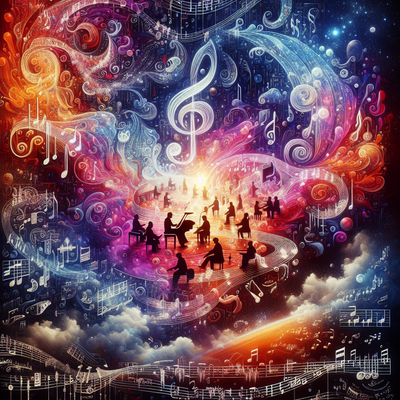Let's dive deep into E=mc² and explore something like trying to go super fast, like, near the speed of light! What could possibly go wrong?
Light thinks it travels faster than anything but it is wrong. No matter how fast light travels, it finds the darkness has always got there first, and is waiting for it. Nature decrees that we do not exceed the speed of light.—unknown
"E=mc²" means "Energy (power) and Mass (stuff) are basically the same thing, just in different forms." And that even a tiny bit of mass has a TON of energy packed inside because of that giant "c²" number (the speed of light squared).
Keep that in mind, because it's the key to understanding why the speed of light is like the ultimate speed limit in the universe. And there's no work-around, no shortcut (except possibly quantum entanglement which looks 'instantaneous'), or even to joke and suggest something does go faster than light, you end up tripping on the hypothetical math of the tachyon. If cause evers flows from effect, we wouldn't understand our realities as we do in today's universe of cause then effect, I mean, how would a Slurpee machine fill itself from your cup, the one your friend just threw you, in reverse time? So Einstein realized nothing goes faster than the speed of light (in a vacuum (light can be slowed down in, say, murky water, etc.))
If your car could travel at the speed of light, would your headlights work?—Steven Wright
And that isn't just the photons in the visible light spectrum but it actually refers to the speed of all forms of electromagnetic radiation when traveling through a vacuum. This includes: Microwaves (like in your microwave oven or for Wi-Fi), Radio waves, Infrared light (heat radiation), Ultraviolet light (from the sun that causes sunburn), X-rays, and Gamma rays. All of these are just different parts of the electromagnetic spectrum, and they all travel at the exact same speed, which we call the speed of light (c), in the emptiness of space. And c=186,000mp/s (300,000kp/s).
Nothing travels faster than the speed of light, with the possible exception of bad news, which obeys its own special laws.—Douglas Adams
Imagine you're trying to push an old Amazon box across the floor. To make it go faster, you need to put more energy into pushing it, right? The faster you want it to go, the more energy you need to use. Simple enough. You have some lunch, take in more energy, and keep pushing.
Now, let's think about something moving really fast, like a spaceship zooming through space. To make that spaceship go faster and faster, you need to keep giving it more and more energy (like firing its engines).
Here's where E=mc² comes in and gets really interesting: As that spaceship gets closer and closer to the speed of light, something strange happens. The energy you're pouring into it to make it go faster doesn't just make it move faster anymore. A weird thing starts to happen where that extra energy you're adding actually starts turning into more mass for the spaceship!
Think of it like trying to run faster and faster, but every time you put more energy into running, you magically get heavier! The more energy you use to speed up, the more "stuff" (mass) gets added to you, making it harder to speed up the next time.

So, as the spaceship gets closer and closer to the speed of light:
- You add energy to make it go faster.
- But a bigger and bigger chunk of that energy turns into mass instead of just speed.
- Now the spaceship is heavier!
- To make a heavier thing go faster, you need even more energy.
- You add that extra energy, but again, a lot of that turns into even more mass!
- Go to #1.
It's a never-ending cycle! The closer you get to the speed of light, the more your energy just gets converted into mass, making you heavier and heavier.
To actually reach the speed of light, you would need to add an infinite amount of energy. And according to E=mc², that infinite energy would turn into an infinite amount of mass!
You can't push something with infinite mass, and you don't have infinite energy to give anyway.
At two-tenths the speed of light, dust and atoms might not do significant damage even in a voyage of 40 years, but the faster you go, the worse it is--space begins to become abrasive. When you begin to approach the speed of light, hydrogen atoms become cosmic-ray particles, and they will fry the crew. ...So 60,000 kilometers per second may be the practical speed limit for space travel.—Isaac Asimov
So, E=mc² doesn't just tell us that mass is packed with energy; it also explains why the speed of light is the ultimate speed limit for anything that has mass. So nature says, "sorry..."
I arise today
Through the strength of heaven:
Light of sun
Brilliance of moon
Splendor of fire
Speed of lightning
Swiftness of wind
Depth of sea
Stability of earth
Firmness of rock.
—Saint Patrick
For my articles in this series, visit or bookmark the following;
Brent Antonson: Where Extraordinary Recall Sparks Insight.








